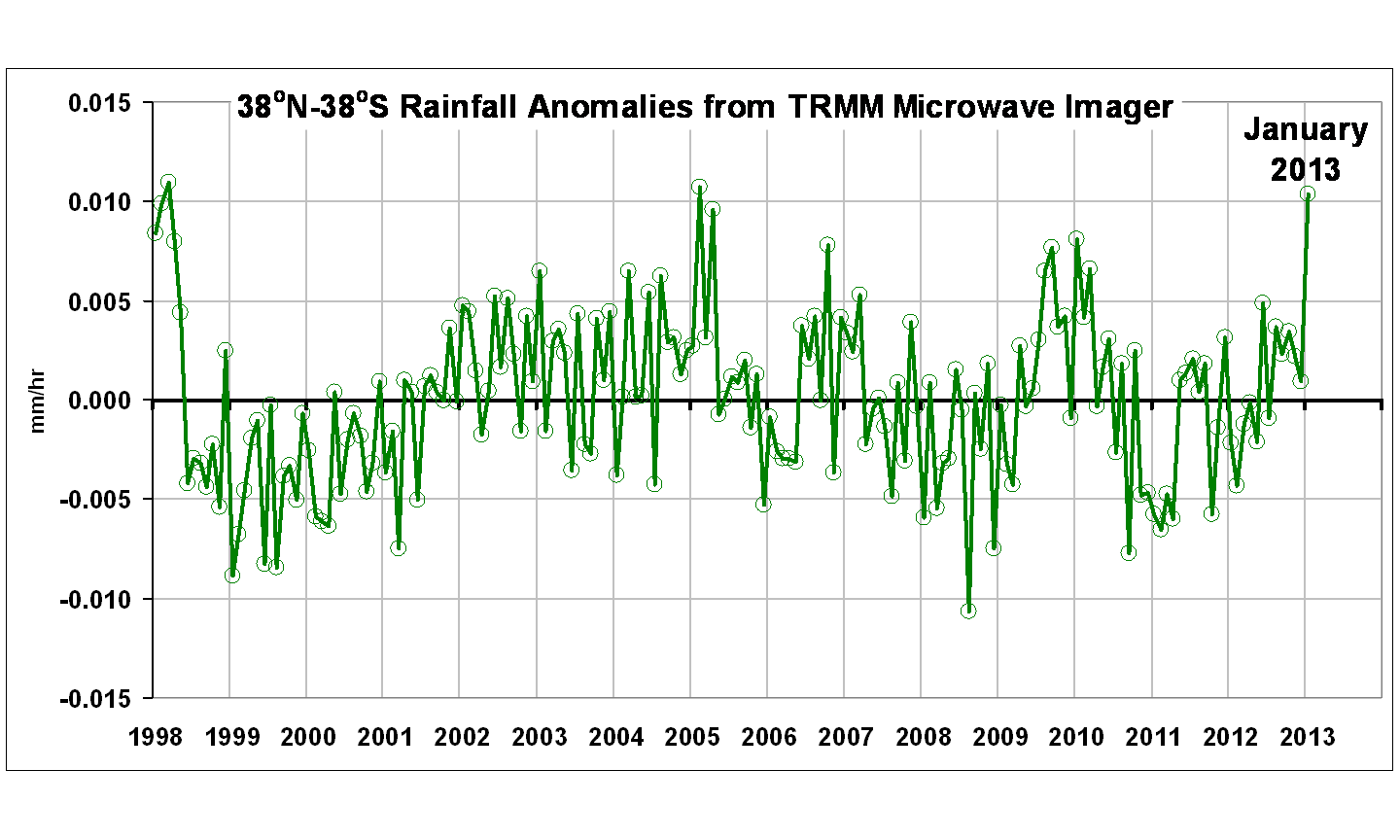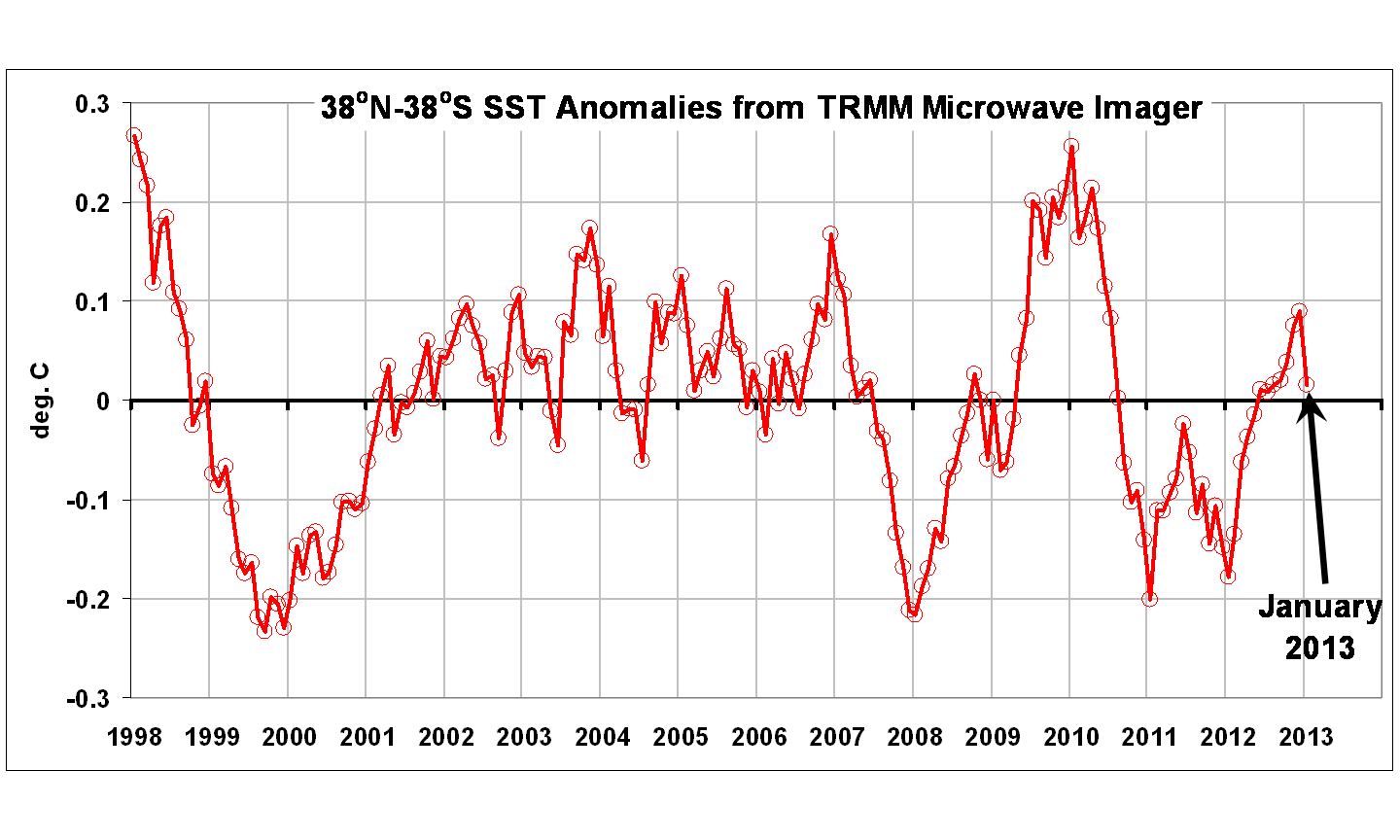NASA’s Tropical Rain Measuring Mission (TRMM) has been, in my opinion, a huge success. It has been operating for over 15 years now, which makes me feel pretty old since I was involved in the early design of the TRMM Microwave Imager (TMI) that flies on TRMM. I campaigned for it to carry 10.7 GHz channels which would allow sensitivity to heavy rain, as well as all-weather sea surface temperatures. TRMM also carries the first spaceborne precipitation radar, which was built by Japan.
Given my recent post about the strong warming of global tropospheric temperatures in January 2013, I thought I would follow up with a comparison between tropical SSTs, tropospheric temperature, rainfall, etc. in January. The data support my previous claim: the anomalous tropospheric warmth was the result of a temporary increase in convective heat transport from the surface to the atmosphere, as evidenced by cooling SSTs, and well-above average precipitation. (Bob Tisdale has also addressed the SST issue in January, from a different set of [IR-sensing] satellites).
The following plot shows TMI monthly SST anomalies averaged over 38oN to 38oS since January 1998, the first full month of operations, and the maximum latitude range which TRMM has continuously covered over its 15+year lifetime:
Note that TRMM started operations in the middle of the historic 1997/98 El Nino event, so the beginning of the time series is very warm.
Also note the dip in SSTs in January, 2013. This was the same time as the AMSU instruments recorded an anomalously warm January.
The next plot shows the monthly rainfall anomalies for the same period of time, and it is clear that rainfall activity (and thus latent heating of the troposphere) was well above average in January:

I have other plots (cloud water, surface wind speed), but the above two plots tell the crux of the story: Above-average moist convective heat transport from the ocean surface to the atmosphere appears to have led to sea surface cooling, and tropospheric warming, in January 2013.

 Home/Blog
Home/Blog




